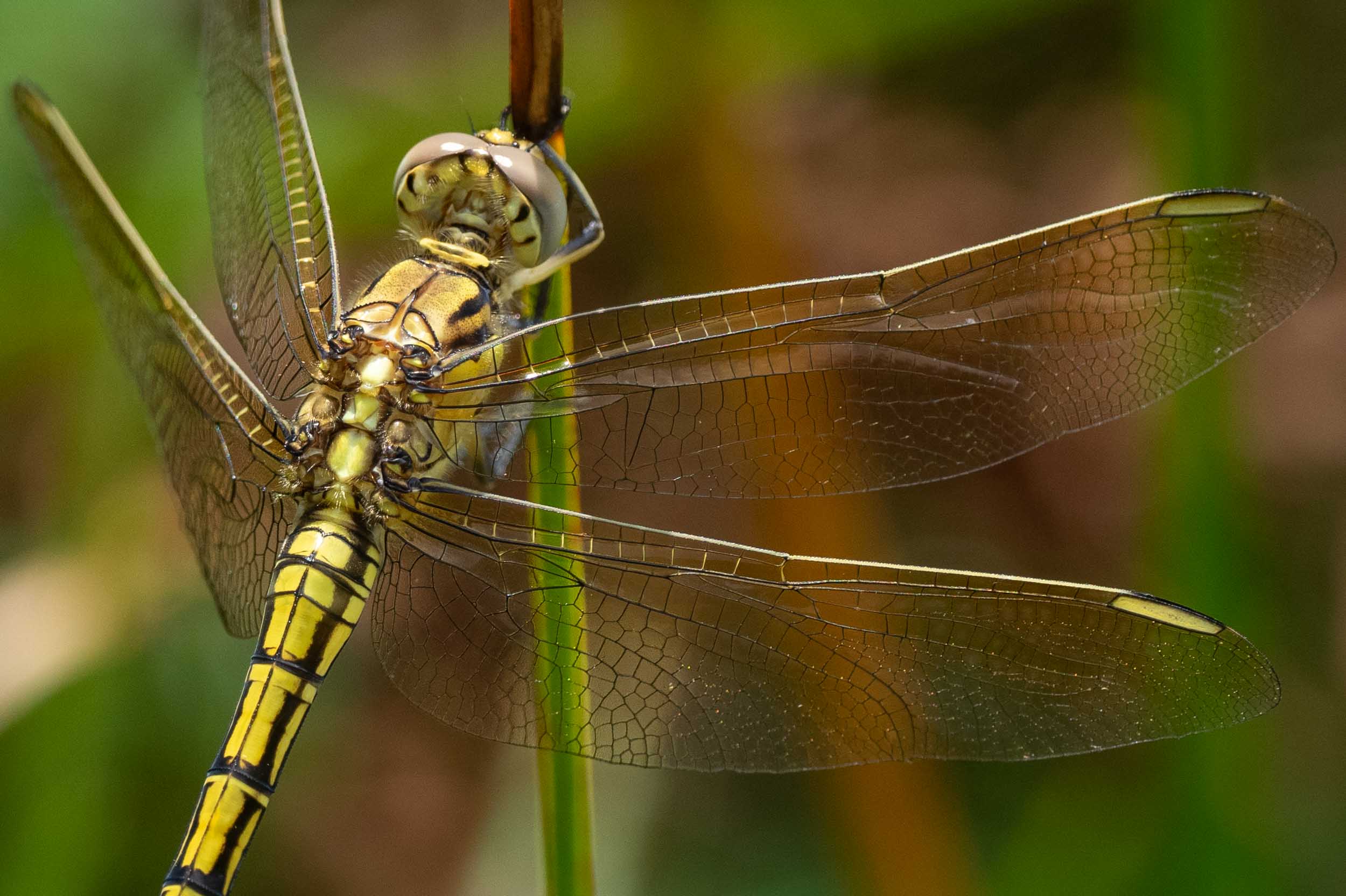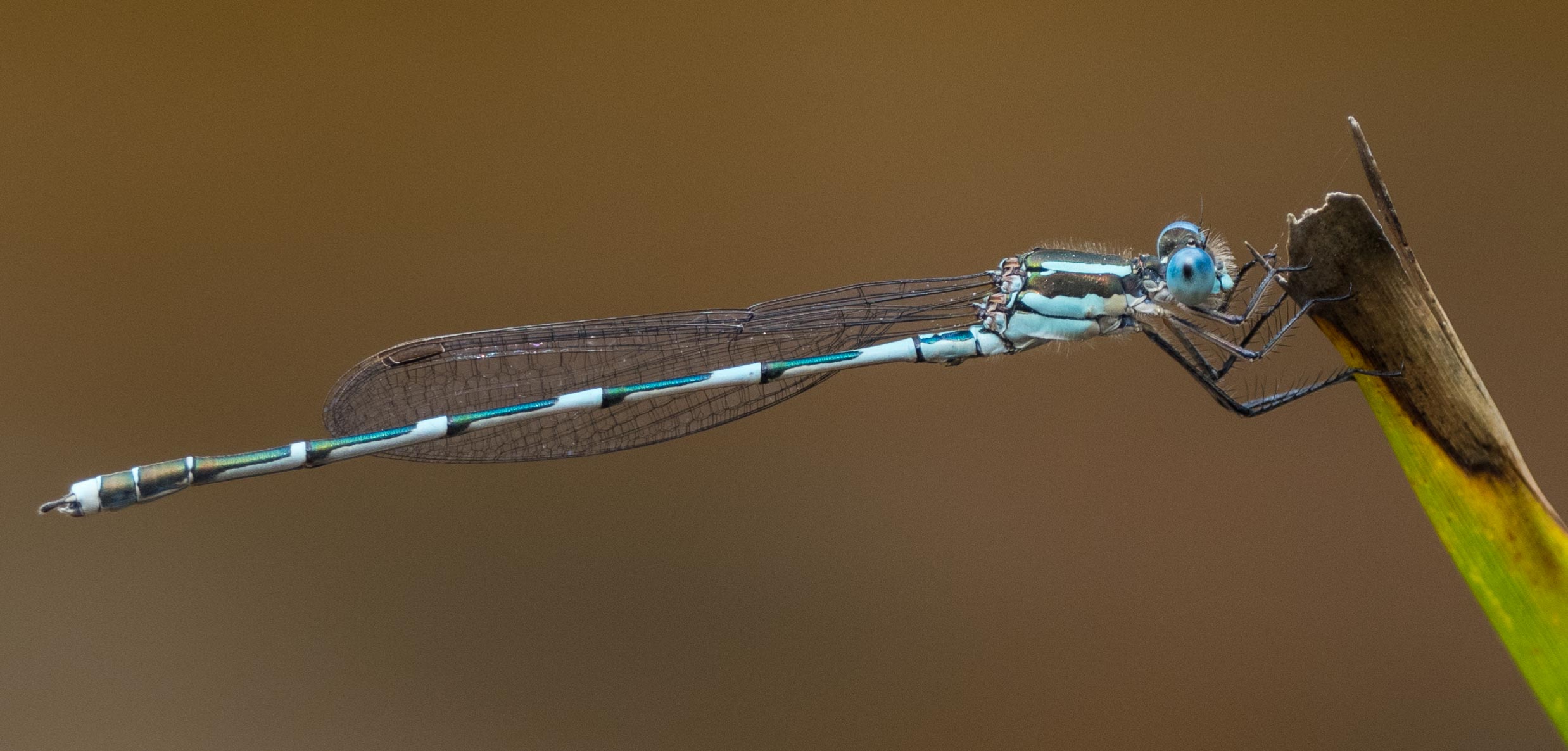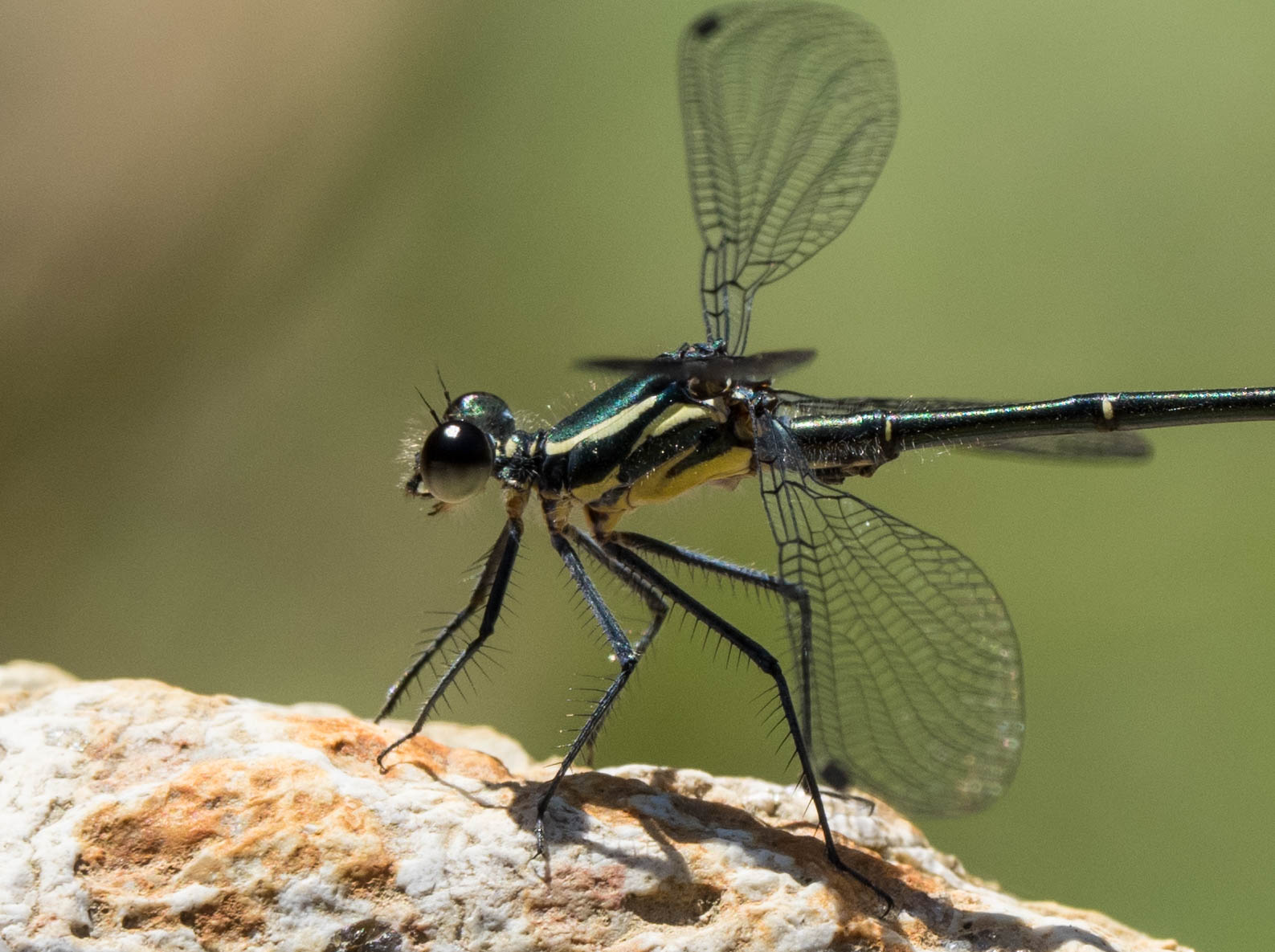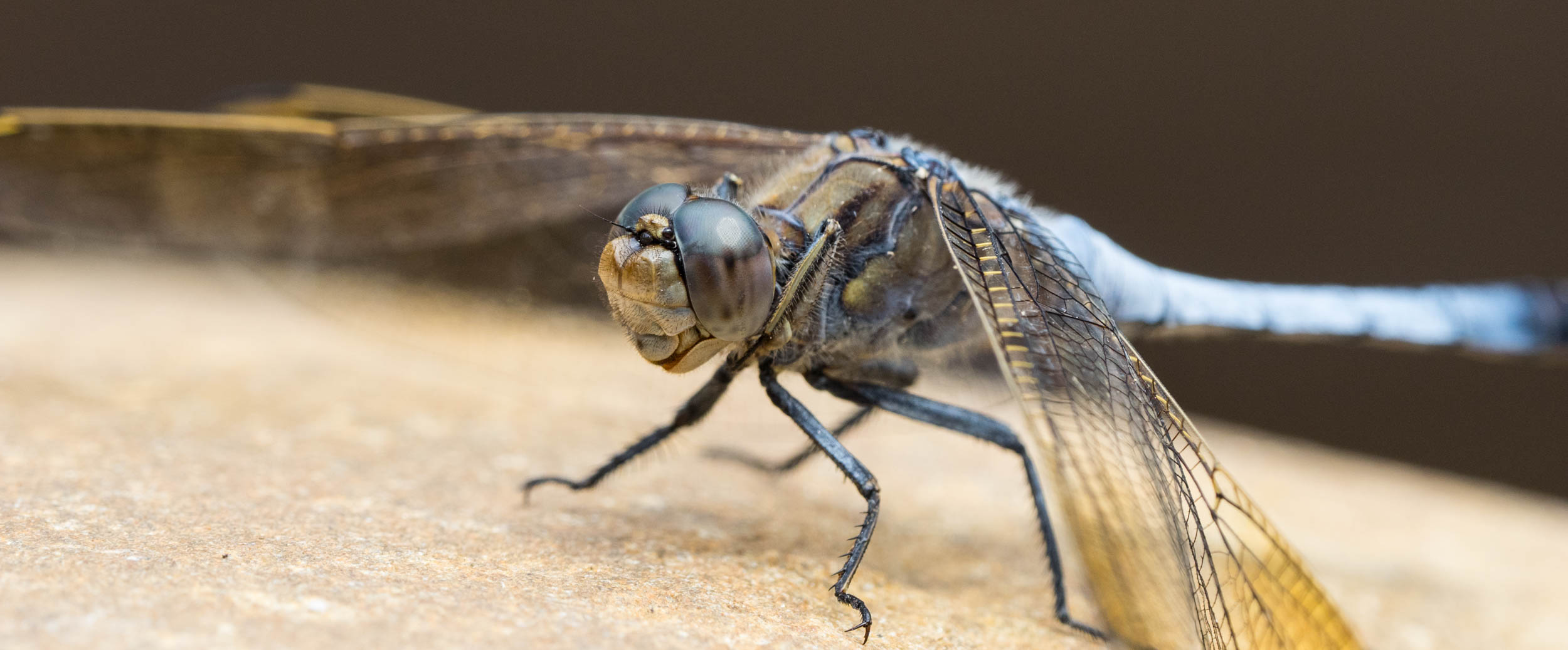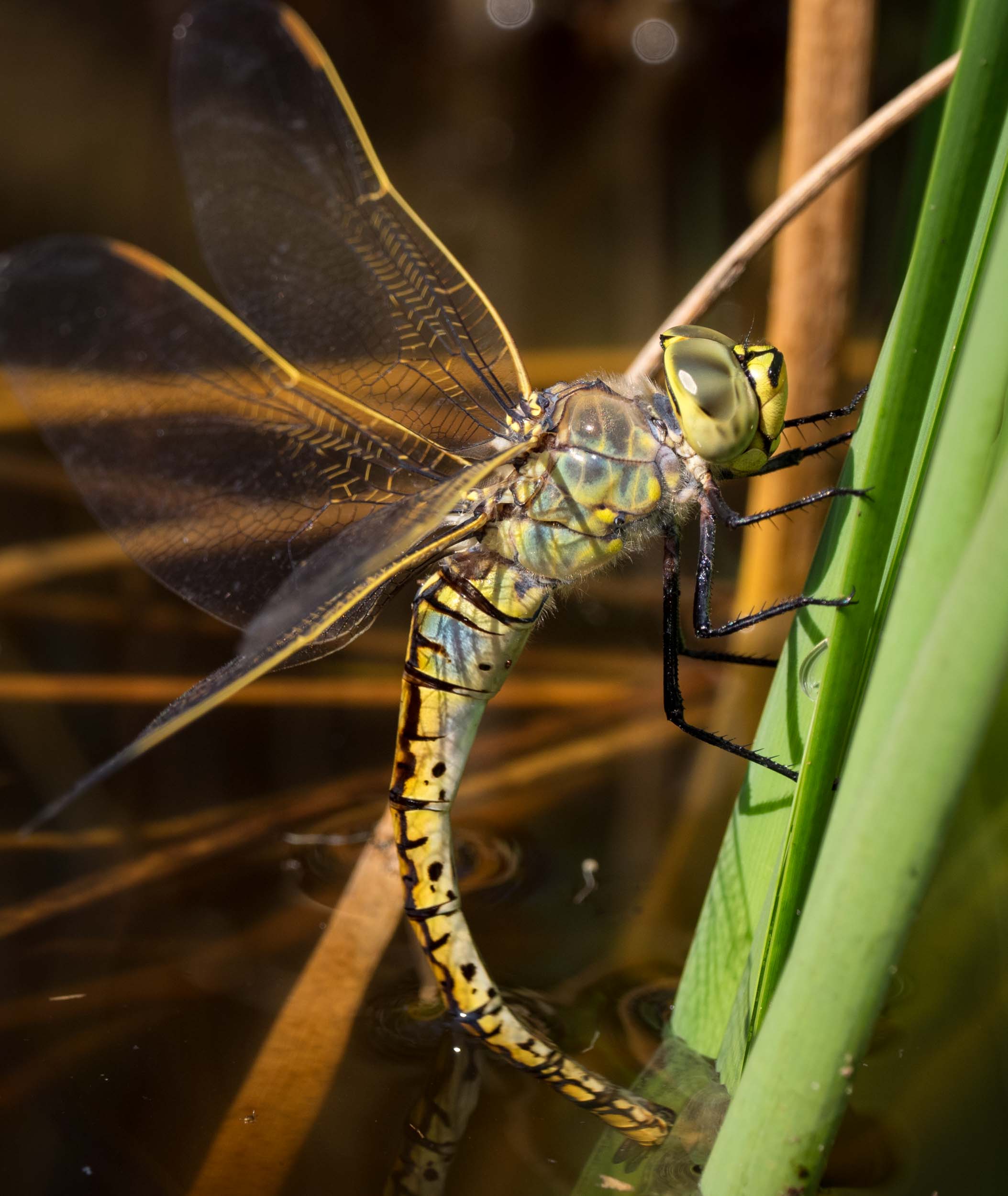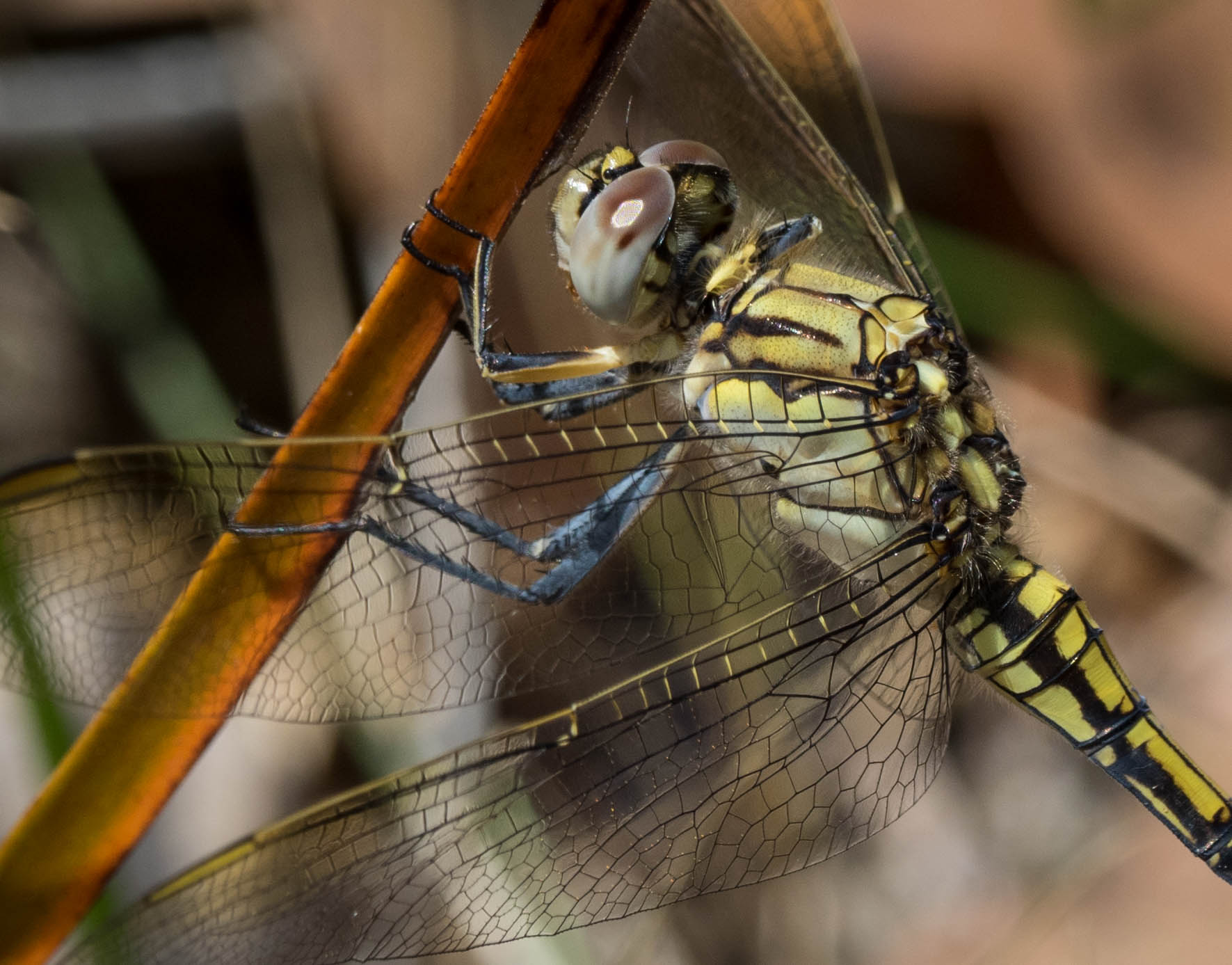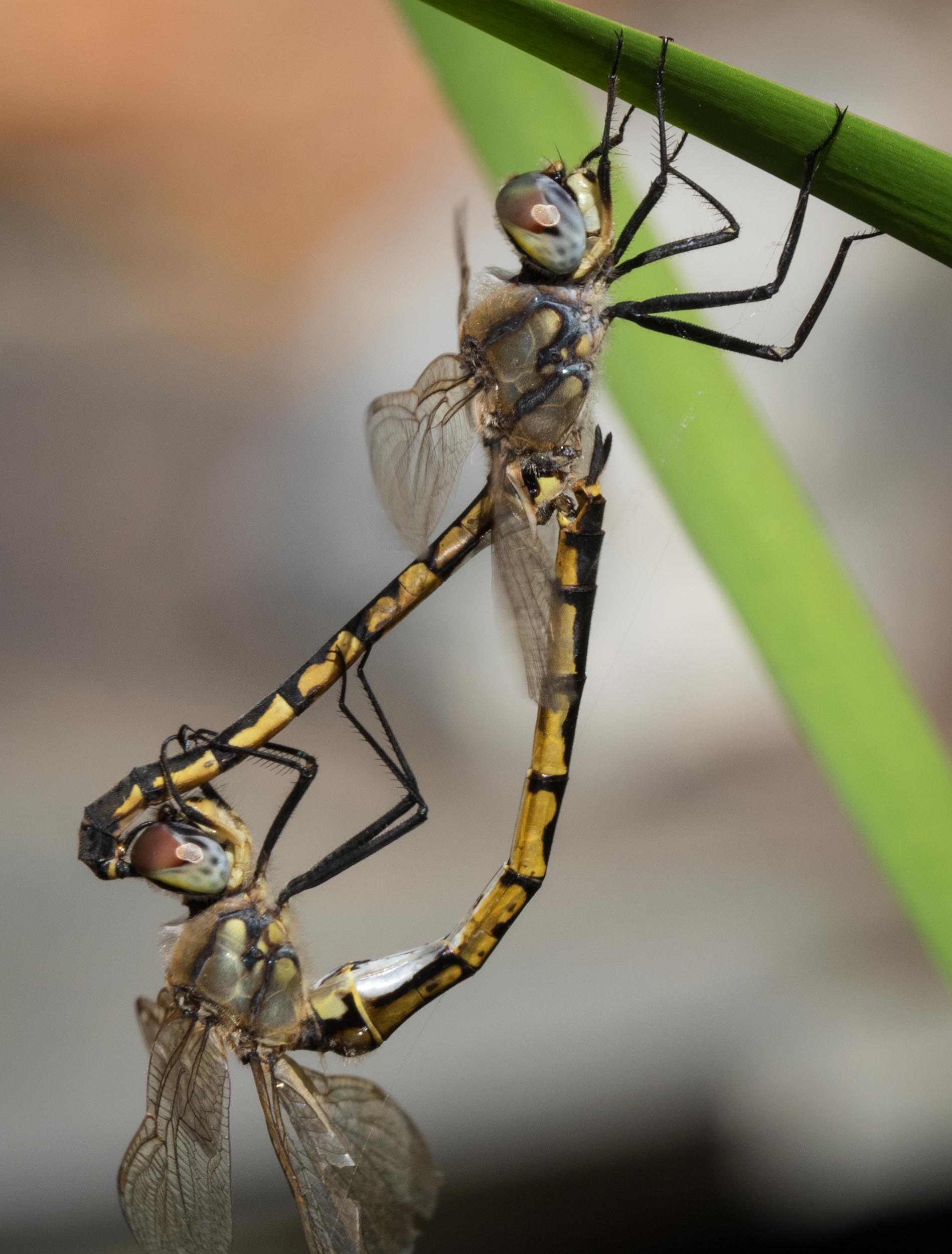Our most common damselfly

The 'Wandering Ringtail' (Austrolestes leda) is a medium-sized damselfly found across the eastern states of Australia. And it was the most common Odonata species (i.e. the insect order comprising dragonflies and damselflies) to visit our frog pond this summer.
Austrolestes leda during egg-laying
The brightly coloured males patrol the pond, awaiting visiting females. They will chase rivals and attempt to guard water plants suitable as egg laying sites. This species was so numerous at the pond this summer that there were typically 5-6 males patrolling at any given time.
Austrolestes leda can easily be confused with several other damselfly species also found in this region, particularly Austrolestes psyche. A distinguishing feature I have been using is based on the colour pattern of the upper side of the second abdominal segment. All a bit tricky at times!
The males do still have to feed while waiting for a mate. This guy is chomping his way through an insect - a moth, I think.
The mechanics of damselfly (or dragonfly) mating is quite elaborate. Once a female accepts a partner, he grips her behind the head with the specialised 'claspers' at the end of his abdomen. And he has a good grip - they can stay together while flying, throughout mating and even during egg-laying!
Sperm transfer is indirect. First, the male moves sperm from his primary genital opening (on abdominal segment 9) to his secondary genitalia beneath abdominal segments 2-3. These secondary genitalia are quite prominent structures and make it simple to identify a male - note that colour alone may not be enough, as although males and females are typically different colours, this varies greatly with their age and young males can look very like females.
Copulation involves contact between the female's genital opening (on abdominal segment 9) and the male's secondary genitalia. This configuration forms the 'wheel' shape so characteristic of mating damselflies and dragonflies. The female then retains the sperm, only fertilising the eggs during laying.
Wandering Ringtail females lay their eggs into soft plant tissue. They have a sharp ovipositor at the end of the abdomen and use this to cut into the plant and then insert an egg.
In this species, the pair remains in tandem throughout egg-laying.
Despite appearances, she is definitely in command of this process! We watched as the female would edge backwards along a stem, slice and lay an egg repeatedly, dragging the male along with her. At time she might completely submerge herself to reach the lower parts of the reeds. It seemed clear that when she needed to emerge, he would do the work of pulling her aloft again.
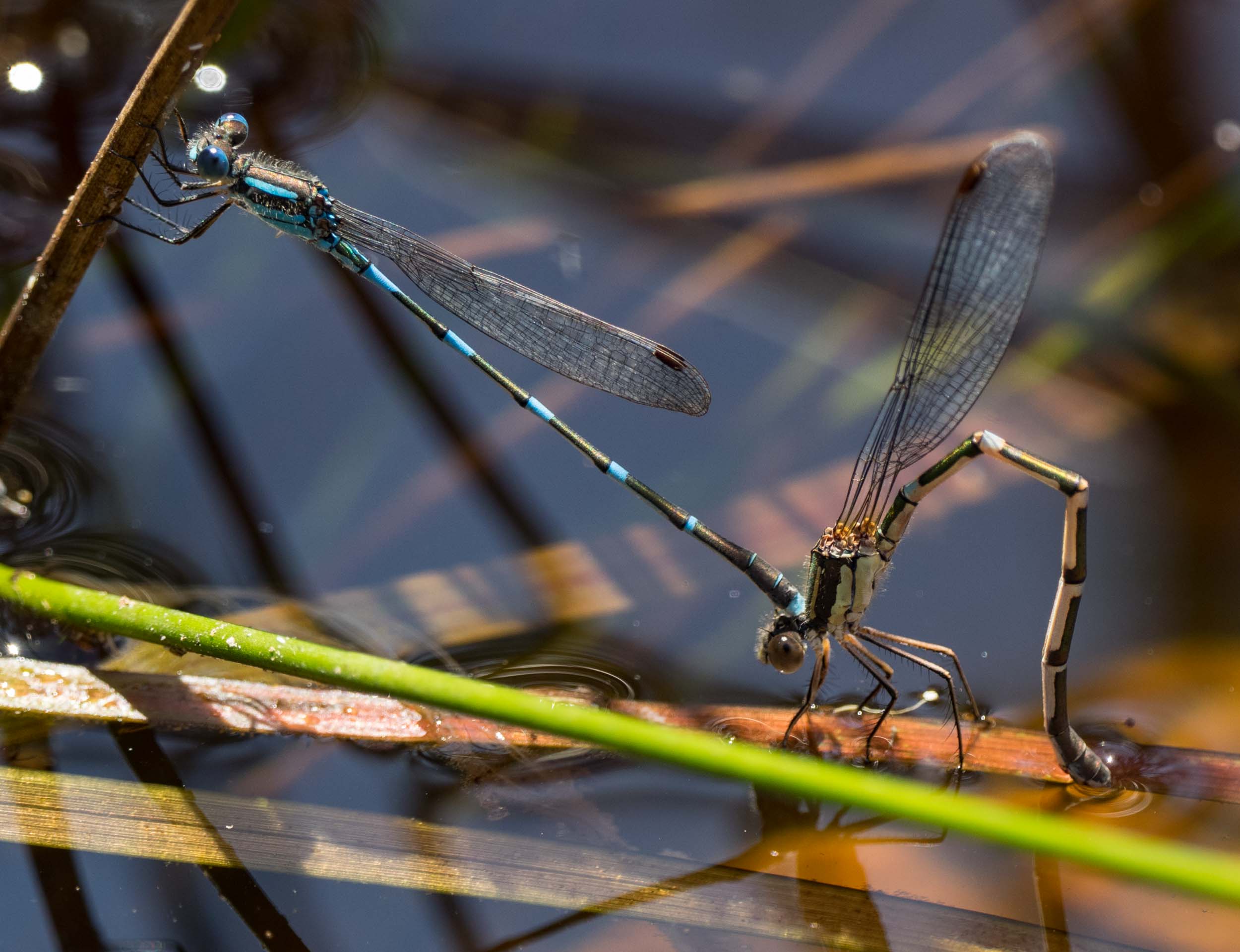
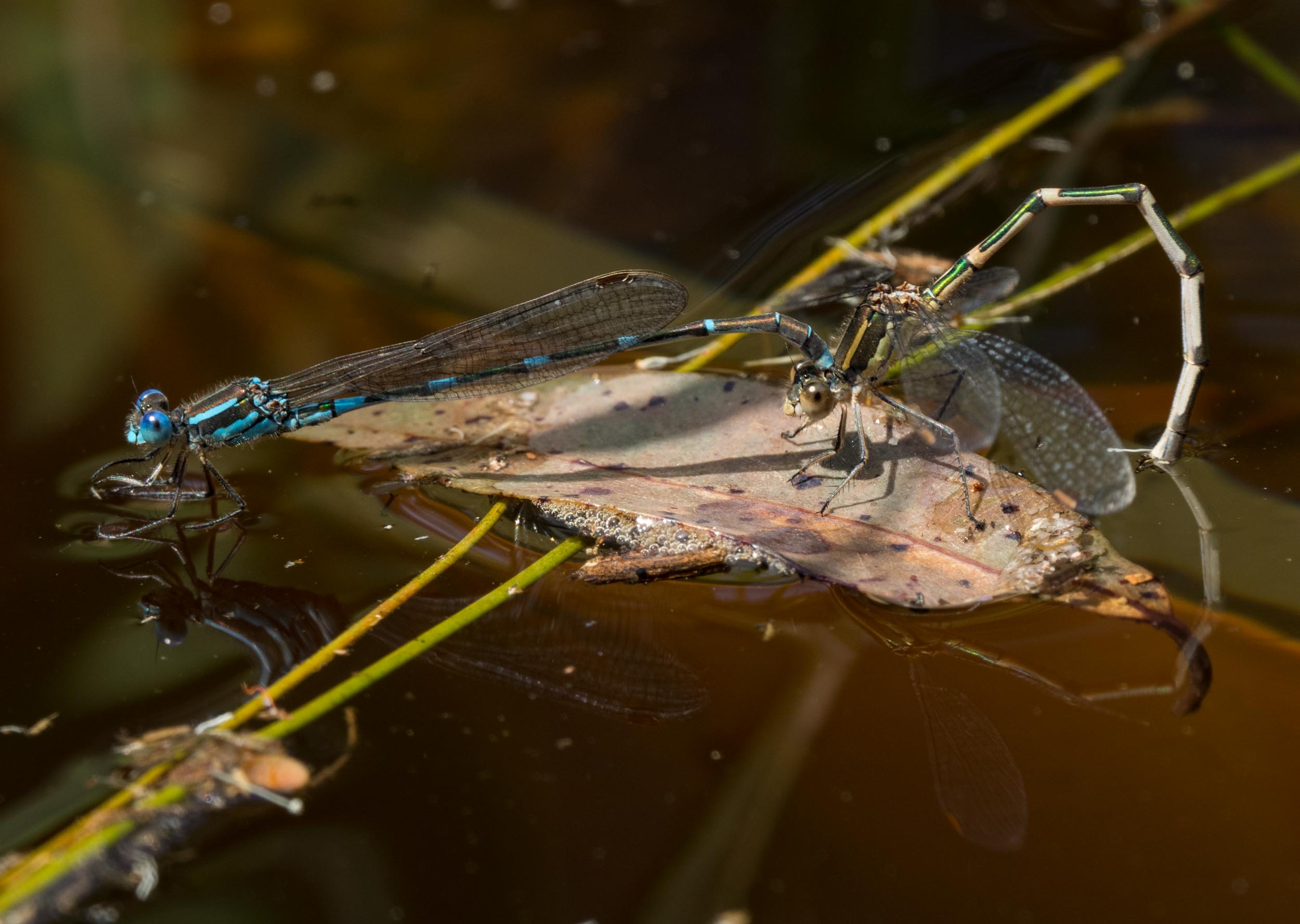
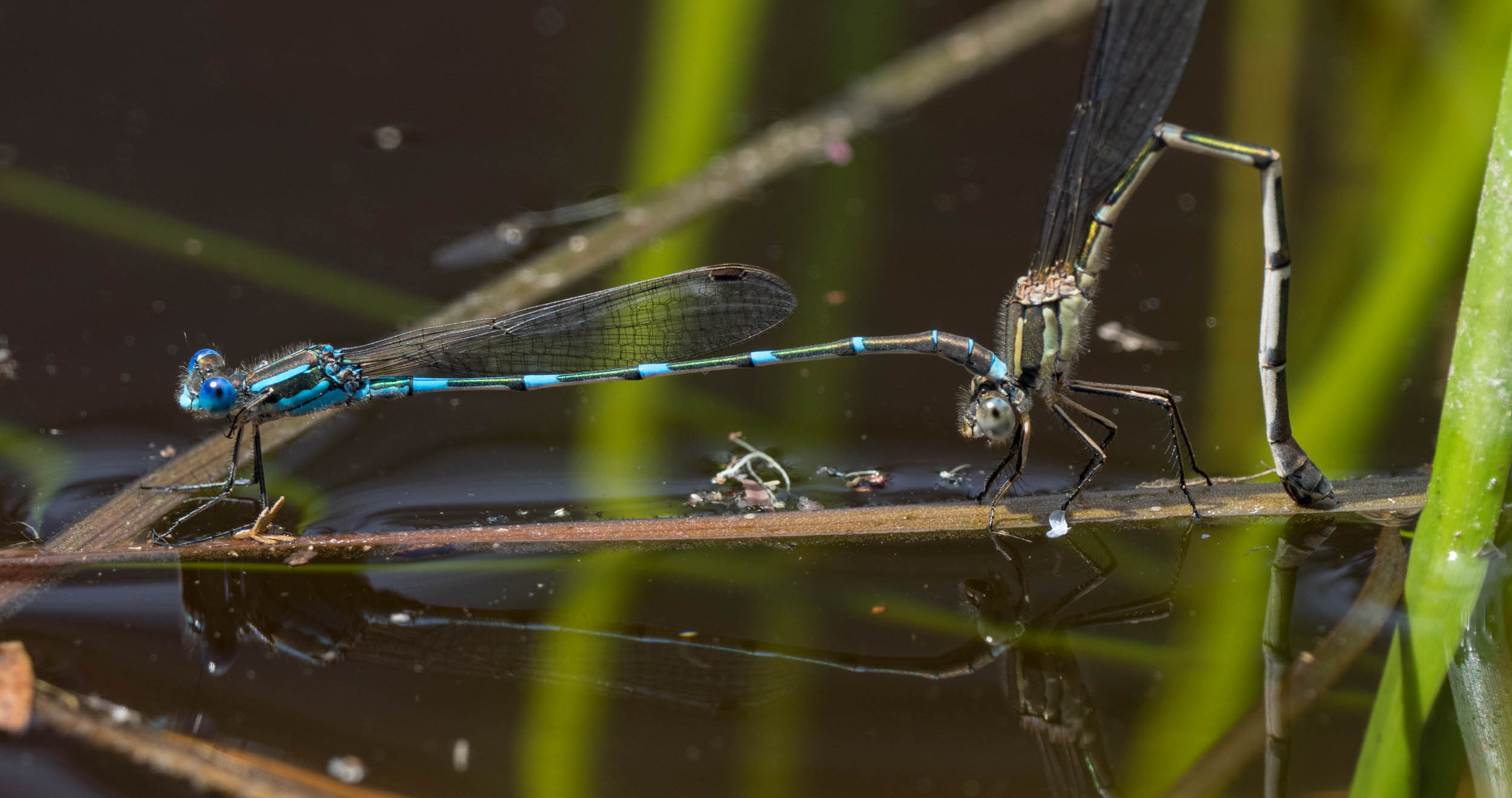
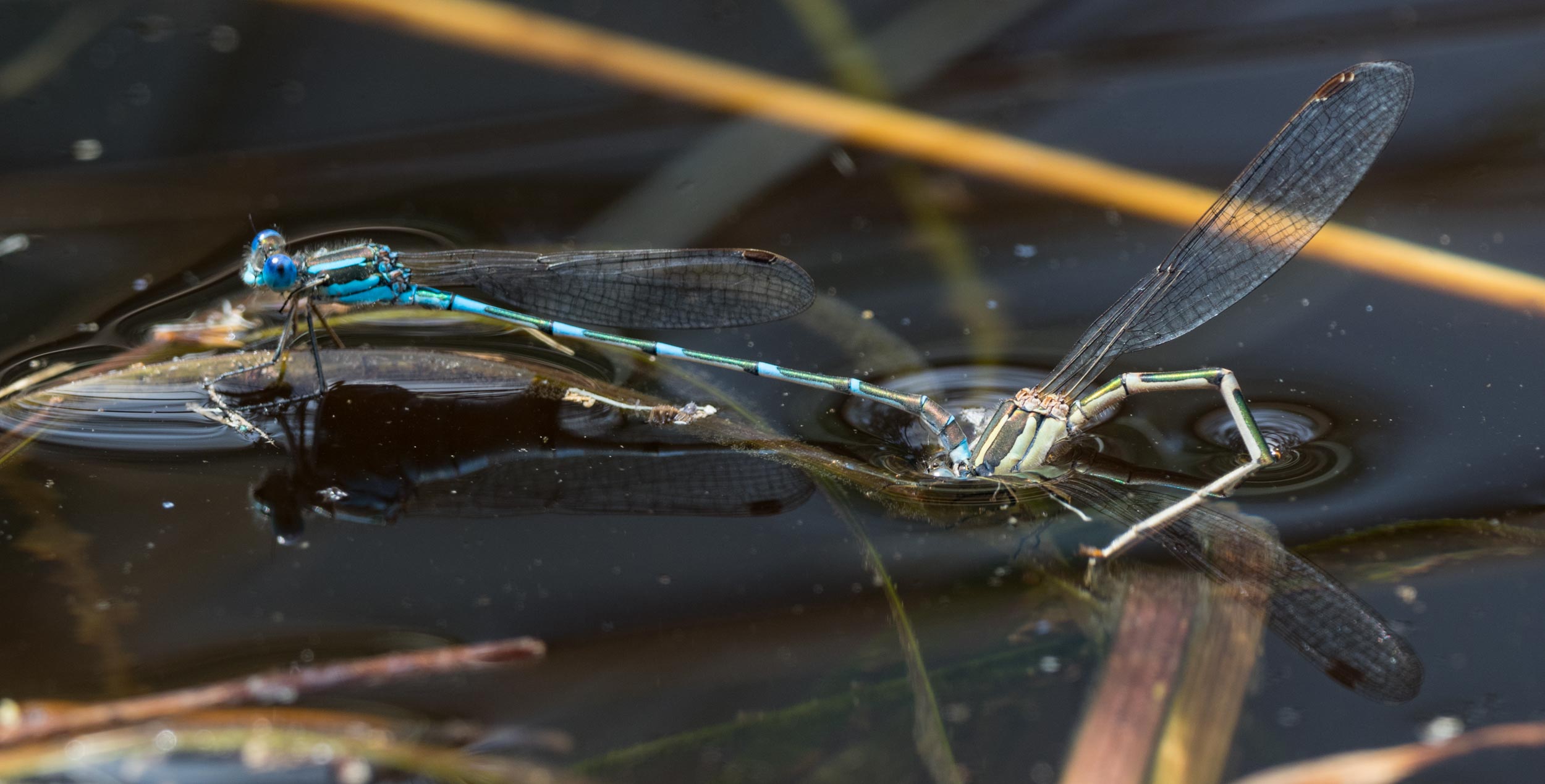
The males don't just hang around to help out, however. They are actually ensuring that their sperm doesn't get displaced by another male prior to egg-laying. And it was quite common to see marauding males attempting to do just that!
It really was getting crowded in our small pond at times!
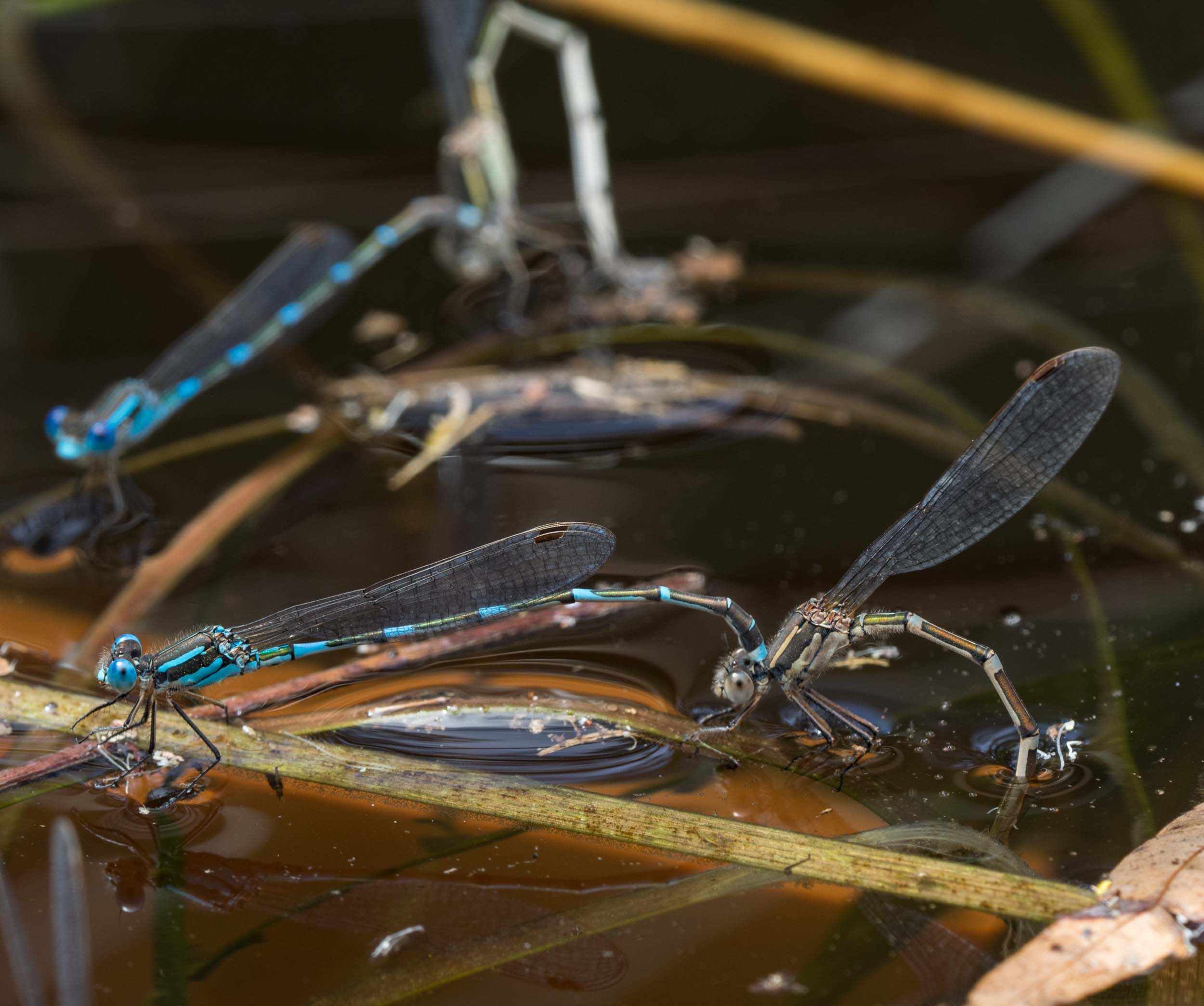
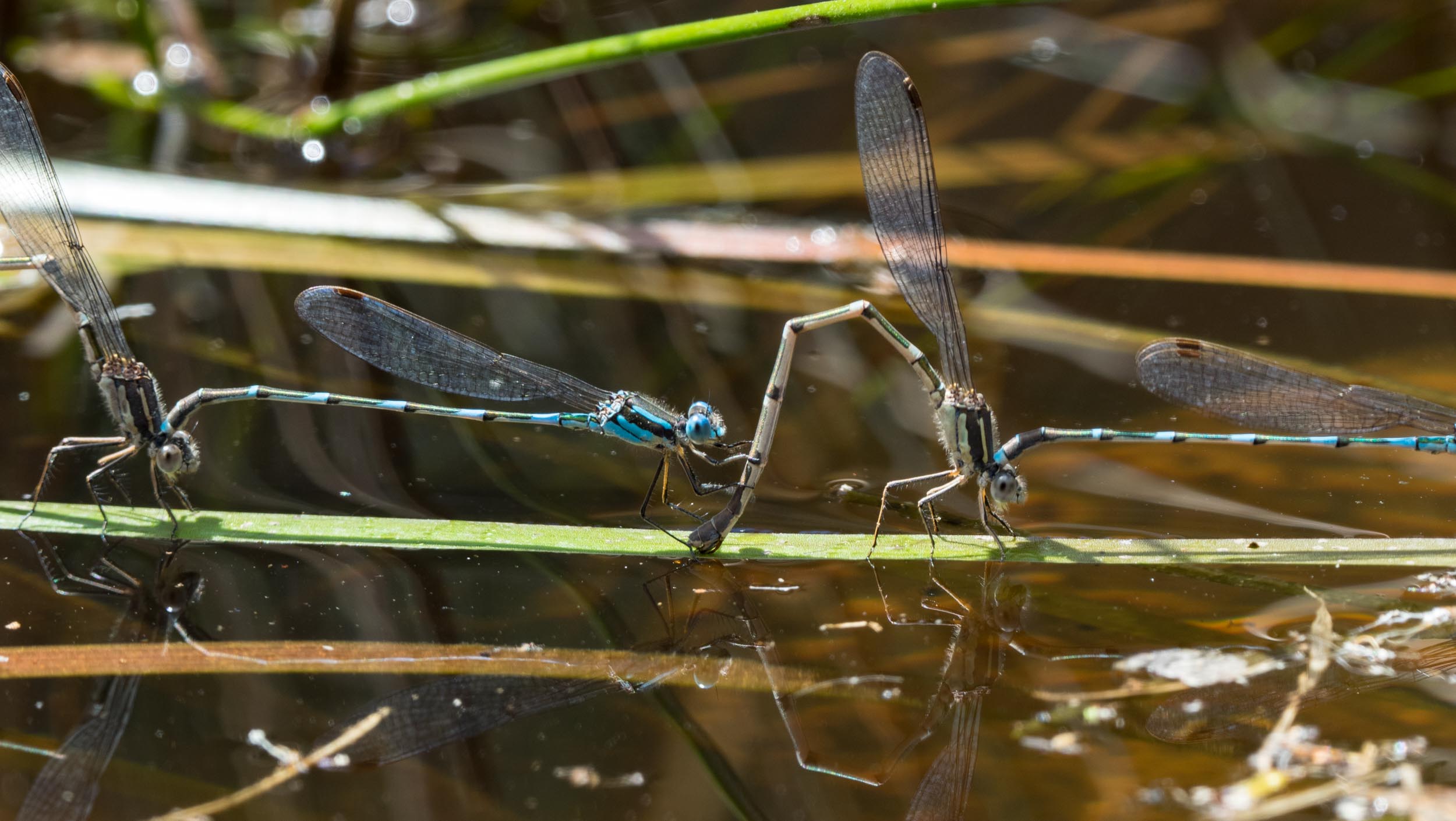
By mid summer we started to see the emergence of a new generation.
Given the huge number of eggs that were laid, we hoped for many more larvae and emerging adults. The challenge, we suspect, was the HUGE population of diving beetles (and their equally ravenous larvae) that were also building up in the pond! More about those ravenous scavengers in another post ...
Diving Beetle larva - these voracious predators would be a match for damselfly hatchlings, and may even prey on the eggs.


